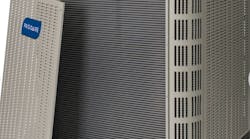Please give us some background about the Radiant Professional Alliance. Who are its members and when and how did it come into existence?
The original RPA (Radiant Panel Association) was started in the early 1990s by a group of individuals interested in promoting the use of radiant/hydronics. Their focus was primarily residential/ light commercial. They were quite successful in giving hands-on working contractors a place to meet with like-minded people to discuss what works best and what to avoid. Members included everyone in the chain of distribution, from the manufacturer to the installer.
Please share some of the Alliance’s goals.
Our goal continues to be to “Grow Radiant,” as well as two new initiatives – one being to “Grow Hydronics” in the commercial building sector and the second to develop the first comprehensive hydronics code with the addition of hydronics to the already-existing Uniform Solar Energy Code.
Since HVACR/Hydronics Distribution Business is a wholesaler-focused magazine, what would you tell a wholesaler if he were considering joining the alliance? Put another way, why should he join, and what are some of the benefits he might gain from membership?
Having been intimately involved in this trade (hydronics and plumbing) for more than 30 years, I have established many relationships with all of the entities involved, from the manufacturer to the installer. One common problem that is relayed to me by the wholesalers and the manufacturers’ representatives is the lack of overall understanding by contractors as to what it is they are tasked with performing in the field. Many of them know HOW to do what it is they are doing, but not the WHY. This is where the wholesalers come in with their training programs and attempt to show them why.
It is our goal, through codification and certification of designers and installers, to show them the “why,” and take the responsibility of overall system design off the backs of wholesalers. It is not our intent to take these contractors away from the wholesalers; in fact, we want the contractors to flock to the wholesalers to do business with them. We only want the contractors to be responsible for their own designs, so that when something changes in the field, instead of grabbing the phone and calling the wholesaler for help, they grab their installation manual and figure it out for themselves. We want the wholesalers to become members of the RPA so that we can certify their staff as designers, and allow them to train and get their contractors certified to a standard that will be much more uniform than what is currently being done.
We also want to utilize the wholesalers’ teaching venues to help continue to “Grow Radiant and Hydronics.” We see it as a win/win proposition for all entities involved. It will gain respect from the consumer and authorities having jurisdiction, and bring even more business to the forefront. We intend to swing the needle in the positive direction and keep it there, and our efforts need the support of all parties concerned.
Hydronics in the U.S. lags far behind forced air, when compared to Europe, for example. Why is this, and how will the alliance address this issue?
Prior to World War II, hydronics had a better foothold on the heating needs of our country. With the coming of the war, many of the critical resources (steel, copper, cast iron, etc.) were reserved for the war effort, and tin being inexpensive made a gigantic leap into people’s future as it pertained to heating. With the demand increasing for cooling, forced air made a lot of sense, and subsequently, hydronics took a back seat to forced air systems. Also, bear in mind that the majority of Europe is located north of the 40th parallel, and their demand for heating is much greater than their demand for cooling compared to the U.S. and other countries, but with the introduction of radiant cooling, we intend to turn that trend around. Radiant cooling cannot handle all of the loads (sensible only) and must have some minor air movement to ensure a good comfort condition (ventilation needs and latent energy). We are partnering with major recognized air moving organizations (ACCA, for example) in our efforts to make sure we deliver full, broad-spectrum comfort. You cannot do a complete job of delivering good human comfort without the need to move air.
What are some of the myths that you believe wholesalers and contractors might still have that prevent them from entering the hydronics market?
I think the largest prevailing myth is that the only way to deliver good human comfort is through the radiant floors. Nothing could be further from the truth. Good human radiant comfort experiences can be cost effective, and radiant floors do have their specific applications, but in my personal experience, and the experiences of others, every square foot of floor does not have to have tubing in it to deliver good comfort. This was proven long before radiant floors were the prevailing means, and I look to alternative surfaces to deliver this good human comfort. Those surfaces include radiant walls, ceilings, countertops, even radiant windows. I hold my good friend Richard Trethewey personally responsible for this radiant floor revolution, and have often wondered what our world would be like if he had shown up on “This Old House” and said “We’re going to do a radiant ceiling today,” instead of a radiant floor.
Having personally experienced radiant floors, walls, ceilings and windows, I can tell you that people who focus only on floors are missing out on a potentially major retrofit market.
The other big myth is that radiant cooling is a “concept.” It is no longer a concept; it has been tested, proven and fine-tuned over in Europe for the last 20 years. It does require substantial forethought and proper application, but it can and does provide a higher degree of human comfort than its forced air counterpart. Products are available from major tubing manufacturers to fill this need. Radiant cooling works exactly like radiant heating, except on the lower end of the scale. Remember, radiant energy affects the mean radiant temperature primarily, and that one factor drives the bus of human comfort, regardless of whether or not we are in heating or cooling mode.
Can you give us a sense of hydronics’ market size and where you expect it to grow?
It has been speculated that it is somewhere between 2 and 7 percent of the residential market. It is more in the commercial market, which we also intend to increase the share of. In either case, there are two ways of looking at those numbers. A skeptic would say, “Only 2 to 7 percent?” where an optimist would say, “Wow, that represents a 93 to 98 percent market potential!” I am a glass half full kind of guy. I prefer to look at it from a market potential point of view. We have nowhere to go but up from here. And we do intend to move the needle residentially as well as commercially.
You became executive director this past May. Please tell us why you took the position as well as something about your background and what direction or plans you have as the new executive director.
Prior to going to work for the RPA, I spent the last seven years of my business life as an expert witness on mechanical/ hydronic heating systems. Basically, I was pursuing really nice people who were unqualified for doing things right in the field. Most had no formal training, were only doing what they thought was right and would work without substantiation, reason or guidance. Then, one of the attorneys for whom I had worked named me and my business in a “subrogation” claim. I had not physically worked on the alleged defective system that failed and caused a major fire loss of a substantial home, but the fact that I had advised the homeowner to make changes to his fuel distribution system (to bring it into compliance with the manufacturer’s requirements) dragged me into the claim. I realized then and there that I no longer wanted to be a part of that litigious work and decided to dedicate the rest of my working career to educating the masses, working from the top down instead of the bottom up. The opportunity to work for the RPA came along at just the right time; I left my lucrative business behind and began working for the RPA. I intend to share my wealth of knowledge and experience in giving our society what it wants and needs as it pertains to comfort system design and installation – certified professionalism.
How do you see radiant and hydronics fitting into the big picture of environmental awareness and responsibility?
President Obama recently announced a major policy change as it pertains to our efforts to reduce our impact on the environment. This includes major initiatives to promote the use of alternative energy systems. Hydronic/radiant is a perfect match for distributing these low temperature resources. Solar thermal has proven itself to be three to four times as efficient in collecting the sun’s rays and transforming them into a useable energy source. Photovoltaic might be sexy, but solar thermal is still the king of proven efficient delivery of energy. Solar thermal, ground and air source heat pumps and hydronics are pure pipe trades. We have the skill set necessary to deliver these extremely efficient systems. Through a properly designed training/ certification process, we (the pipe trades industry) will be ready when the Uniform Solar Energy and Hydronics Code hits the streets in 2015. In my personal opinion, the Radiant Professionals Alliance is a worthwhile organization to join regardless of where within the distribution chain you fit – be it manufacturer, contractor or any steps in between. Please join us. Check us out at www.radiantprofessionalsalliance.org. We are an association of the members, by the members, for the members, and we are here to serve you, our members. If you have additional questions or concerns, feel free to call me at 877/427-6601, extension 3001 or [email protected].





